
The Brahmic scripts, also known as Indic scripts, are a family of abugida writing systems. They are used throughout the Indian subcontinent, Southeast Asia and parts of East Asia. They are descended from the Brahmi script of ancient India and are used by various languages in several language families in South, East and Southeast Asia: Indo-Aryan, Dravidian, Tibeto-Burman, Mongolic, Austroasiatic, Austronesian, and Tai. They were also the source of the dictionary order (gojūon) of Japanese kana.
Baybayin is a Philippine script. The script is an abugida belonging to the family of the Brahmic scripts. Geographically, it was widely used in Luzon and other parts of the Philippines prior to and during the 16th and 17th centuries before being replaced by the Latin alphabet during the period of Spanish colonization. It was used in the Tagalog language and, to a lesser extent, Kapampangan-speaking areas; its use spread to the Ilocanos in the early 17th century. In the 19th and 20th centuries, baybayin survived and evolved into multiple forms—the Tagbanwa script of Palawan, and the Hanuno'o and Buhid scripts of Mindoro—and was used to create the constructed modern Kulitan script of the Kapampangan and the Ibalnan script of the Palawan people. Under the Unicode Standard and ISO 15924, the script is encoded as the Tagalog block.
The Balinese script, natively known as Aksara Bali and Hanacaraka, is an abugida used in the island of Bali, Indonesia, commonly for writing the Austronesian Balinese language, Old Javanese, and the liturgical language Sanskrit. With some modifications, the script is also used to write the Sasak language, used in the neighboring island of Lombok. The script is a descendant of the Brahmi script, and so has many similarities with the modern scripts of South and Southeast Asia. The Balinese script, along with the Javanese script, is considered the most elaborate and ornate among Brahmic scripts of Southeast Asia.
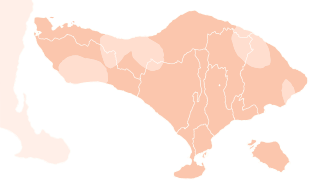
Balinese is a Malayo-Polynesian language spoken by 3.3 million people on the Indonesian island of Bali, as well as Northern Nusa Penida, Western Lombok, Eastern Java, Southern Sumatra, and Sulawesi. Most Balinese speakers also use Indonesian. The Bali Cultural Agency estimated in 2011 that the number of people still using the Balinese language in their daily lives on the Bali Island is under 1 million. The language has been classified as "not endangered" by Glottolog.

Javanese is a Malayo-Polynesian language spoken by the Javanese people from the central and eastern parts of the island of Java, Indonesia. There are also pockets of Javanese speakers on the northern coast of western Java. It is the native language of more than 98 million people.
Old Javanese or Kawi is the oldest attested phase of the Javanese language. It was spoken in the eastern part of what is now Central Java and the whole of East Java, Indonesia. As a literary language, Kawi was used across Java and on the islands of Madura, Bali and Lombok. It had a sizable vocabulary of Sanskrit loanwords but had not yet developed the formal krama language register, to be used with one's social superiors that is characteristic of modern Javanese.
The Javanese script is one of Indonesia's traditional scripts developed on the island of Java. The script is primarily used to write the Javanese language, but in the course of its development has also been used to write several other regional languages such as Sundanese, Madurese, and Sasak; the lingua franca of the region, Malay; as well as the historical languages Kawi and Sanskrit. Javanese script was actively used by the Javanese people for writing day-to-day and literary texts from at least the mid-15th century CE until the mid-20th century CE, before its function was gradually supplanted by the Latin alphabet. Today the script is taught in DI Yogyakarta, Central Java, and the East Java Province as part of the local curriculum, but with very limited function in everyday use.

Tagbanwa is one of the scripts indigenous to the Philippines, used by the Tagbanwa and the Palawan people as their ethnic writing system.

The Kawi or Old Javanese script is a Brahmic script found primarily in Java and used across much of Maritime Southeast Asia between the 8th century and the 16th century. The script is an abugida meaning that characters are read with an inherent vowel. Diacritics are used, either to suppress the vowel and represent a pure consonant, or to represent other vowels.

The Pallava script or Pallava Grantha is a Brahmic script named after the Pallava dynasty of Southern India and is attested to since the 4th century CE. In India, the Pallava script evolved into the Tamil and Grantha script. Pallava also spread to Southeast Asia and evolved into local scripts such as Balinese, Baybayin, Javanese, Kawi, Khmer, Lanna, Lao, Mon–Burmese, New Tai Lue alphabet, Sundanese, and Thai.

ꦱ is a syllabogram in Javanese script that represents the sounds /sɔ/ and /sa/. It is transliterated to Latin as "sa", and sometimes in Indonesian orthography as "so". It has another form (pasangan), which is ꧀ꦱ, but represented by a single Unicode code point, U+A9B1.
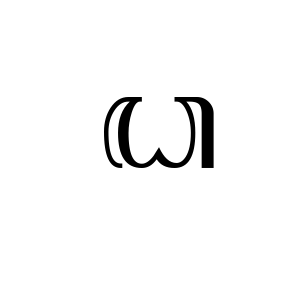
ꦝ is a syllable in Javanese script that represents the sound /ɖɔ/, /ɖa/. It is transliterated to Latin as "dha", and sometimes in Indonesian orthography as "dho". It has another form (pasangan), which is ◌꧀ꦝ, but represented by a single Unicode code point, U+A99D.
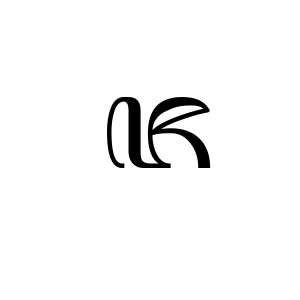
ꦗ is a syllable in Javanese script that represents the sound /dʒɔ/, /dʒa/. It is transliterated to Latin as "ja" or "ya", and sometimes in Indonesian orthography as "jo" or "yo". It has another form (pasangan), which is ◌꧀ꦗ, but represented by a single Unicode code point, U+A997.
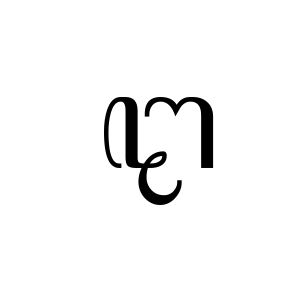
ꦛ is a syllable in Javanese script that represents the sound /ʈɔ/, /ʈa/. It is transliterated to Latin as "tha", and sometimes in Indonesian orthography as "tho". It has another form (pasangan), which is ◌꧀ꦛ, but represented by a single Unicode code point, U+A99B.

ꦔ is one of syllable in Javanese script that represent the sound /ŋɔ/, /ŋa/. It is transliterated to Latin as "nga", and sometimes in Indonesian orthography as "ngo". It has another form (pasangan), which is ◌꧀ꦔ, but represented by a single Unicode code point, U+A994.
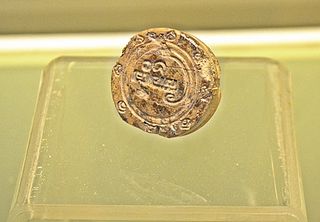
The Butuan Ivory Seal or BIS is an ivory stamp or seal stamp or a privy seal associated with a Rhinoceros Ivory Tusk, dated 9th–12th century, was found in Libertad, Butuan in Agusan del Norte in southern Philippines. Inscribed on the seal is the word Butban in stylized Kawi. Butban was presumed to stand for Butuan. The ivory seal is now housed at the National Museum of the Philippines.

Buda Script or (Aksara Buda) or Gunung Script is an archaic script. Based on its shape, the Buda Script still has a close relationship with the Kawi script. This script was previously used on the island of Java and Bali. This type of script is called the Buda script because it is considered to have originated from the pre-Islamic era which is called the Buddhist Age. The word Buda is based on the Buddha word. Manuscripts containing writing using the Buda script are commonly found in mountainous areas. Because of that, this type of script is also called the "Mountain script".
Kawi is a Unicode block containing characters for Kawi script. The script was used historically in insular Southeast Asia to write the Old Javanese, Sanskrit, Old Malay, Old Balinese, and Old Sundanese languages.












